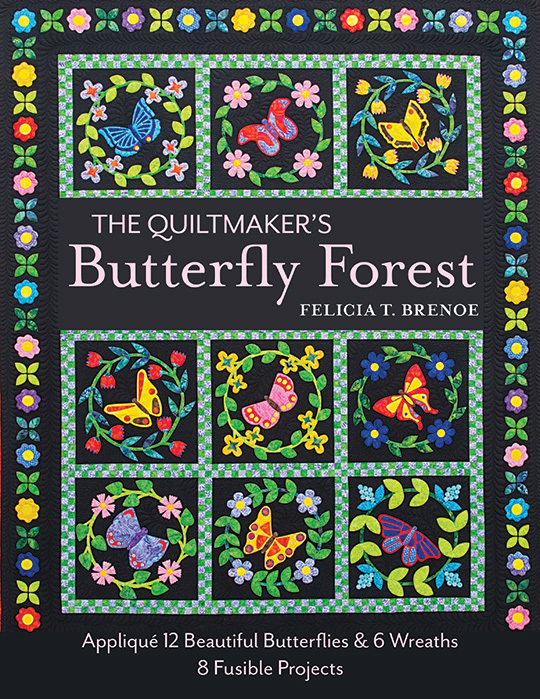The Freedom of Appliqué!
Posted by Felicia Brenoe on Jan 20th 2017
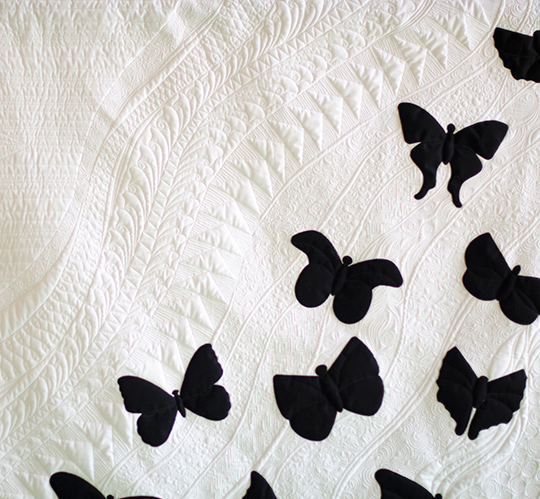
Disclaimer: This post contains the opinions of an appliqué lover. Felicia Brenoe is the author of popular appliqué pattern pack My Cozy Village and her new book on appliqué, The Quiltmaker's Butterfly Forest, came out in December 2016.
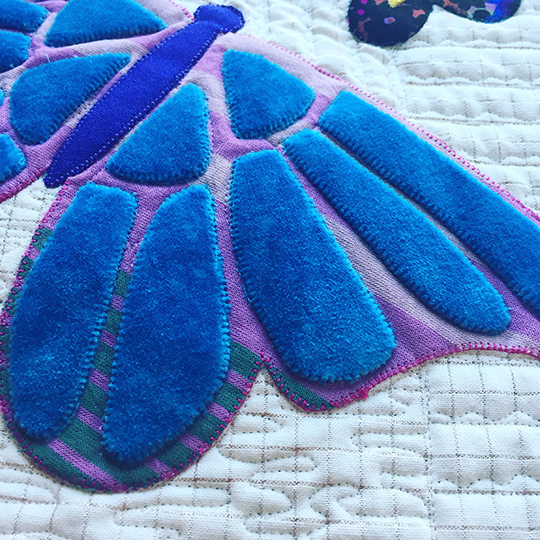
“You know,” a fellow quilt designer said to me over dinner one night. “Only about twenty percent of quilters do appliqué. The rest of them stick to piecing.”
Really? I knew from teaching appliqué that it seemed a little harder to fill those classes than my piecing classes. But twenty percent? Whether the number is really that low or not, it made me a little sad.
By writing books on appliqué, had I eliminated 80 percent of my potential readers and makers? My goal when designing, writing, and publishing appliqué quilts is to reach people, to share the freedom that I find in appliqué, and to inspire and teach other quilters how to do the same with joy and confidence.
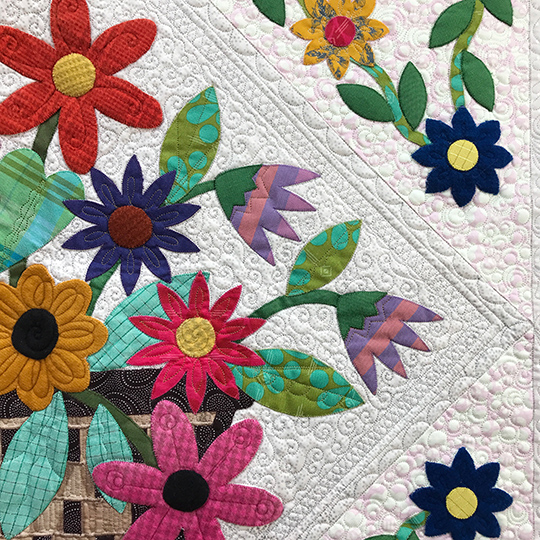
I have heard plenty of reasons why quilters may have a tendency to stick to piecing quilt tops, rather than diving into appliqué. Here are some of the beliefs I bump into most often:
- It takes a long time to make an appliqué quilt.
- It is difficult.
- I am not experienced enough.
- I am not accurate enough. I can’t even make a good four-patch block.
- My sewing machine isn’t good enough.
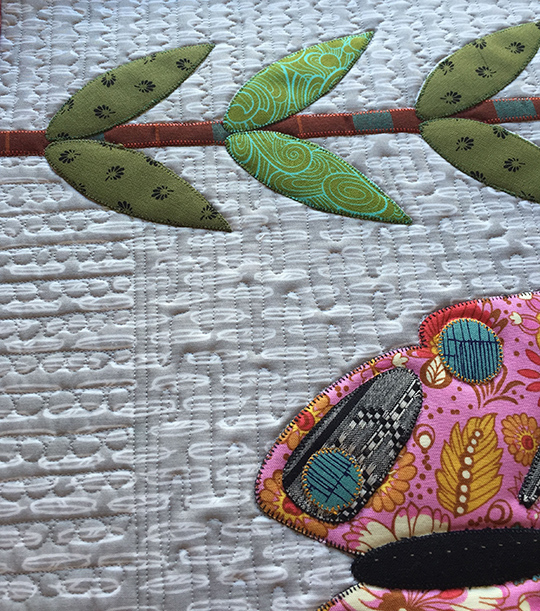
With the danger of sounding a bit preachy, let me share with you the reasons I believe everybody should add at least one form of appliqué to their quilting skill set, whether it be hand appliqué or some form of machine appliqué:
- When you dive into the world of appliqué, you are literally off the grid. The vast majority of pieced quilt blocks out there are designed on a grid system, and there are books written about this. This means that when you are piecing your quilts, you are for the most part constrained by straight angles and the large pixels that your block grid consists of. When there are curved seams or inset seams many of us start to sweat, so in practice that means we are limited to squares, triangles, and rectangles. Appliqué, on the other hand, puts no such limitations on us. If the fabric piece is wide enough to put stitches on, you can appliqué it down. Small pieces, large pieces, curves, and straight lines—if you can draw it, you can appliqué it.
- If you can drive a car without driving off the road, you can raw-edge appliqué as well. It isn’t any different than driving, except that you can be home in your pajamas when you do appliqué, and you are unlikely to put anyone’s life in danger. Your windshield is your open-toed foot and the edge of your fabric is the white stripe on the side of the road. When the road is curvy, slow down. Go faster on the straight stretches.
- Appliqué is only as hard as you make it. Just like piecing, you can make appliqué as hard or as easy as you please. If you want to play with appliqué without being overwhelmed, use simple shapes! Don’t particularly want to start a Baltimore Album quilt with no end in sight? Then do something simple. As an example, the quilt tops for Butterflies Rising and Easy-Breezy Butterflies in The Quiltmaker’s Butterfly Forest were assembled in just a few sewing sessions.
- No ¼" seam allowances to worry about. As pieced blocks get more intricate, the issue of accurate seam allowances becomes gradually more important. When seam allowances aren’t accurate, the block becomes either too small or too big and affects the whole quilt during the assembly. Appliqué is perfect for those of us who find accurate seam allowances to be a bit of a mystery. In appliqué, your mistakes or inaccuracies stay local. If the flower is placed a little lower or higher than the diagram shows, it only affects the block you are working on. The only seam allowances to worry about in an appliqué quilt is when assembling the quilt top.
- Appliqué requires only simple tools. Whether you choose to do hand appliqué or machine appliqué, know that the tools you have will likely be all you need. Maybe you need to get a roll of tear-away stabilizer or a pack of needles, but I am almost certain you don’t need a new sewing machine unless the one you have isn’t working. Beautiful, funky, cute, and perfectly lovely machine appliqué requires only that you have a decent machine where you can control the tension and have, at the very least, a straight stitch … a zigzag and a blanket stitch would also be fabulous. An open-toe foot so that you can see where you are sewing is a plus. If you are already a quilter, I am almost certain you have the required tools.
Have I convinced you yet? Try a bit of appliqué! Find a pattern or a book that inspires you and dive into it. If you are still on the fence, maybe this reminder will help:
Be willing to be a beginner, and be willing to mess it up. I doubt that you will have problems developing into a confident appliqué practitioner. However, as with any new skill we take on, we will only take that first step if we are truly okay with making mistakes. Be willing to make a truly terrible appliqué quilt and surprise yourself with how well it turns out.
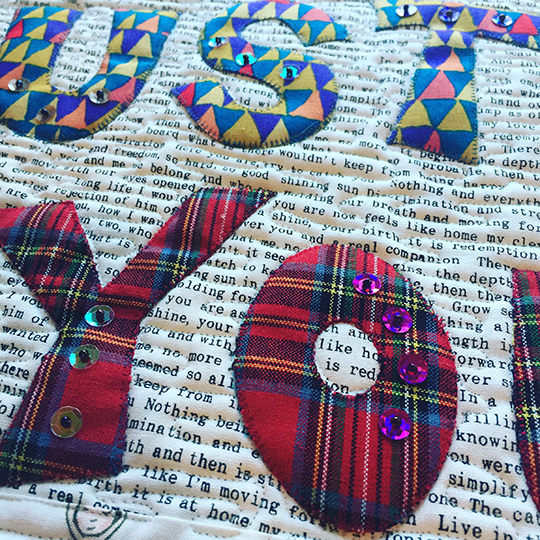
Happy appliqué!
Felicia


